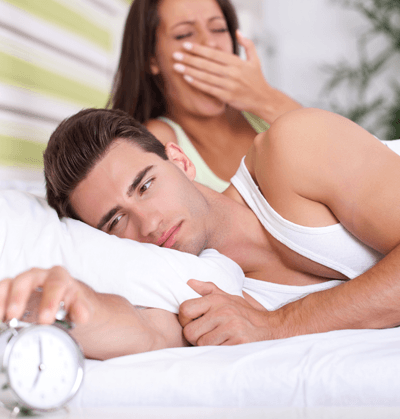Sleep is a most powerful human drive. All adults really do need 8 hours of sleep and there is little variation on that requirement. People are not good judges of their own performance levels when it comes to sleep deprivation. So, when someone says they get by just fine on 6 hours of sleep, it means they are not bothered by lack of sleep. That is, they just don’t know. But poor sleep ages the body and impairs all cognitive and emotional functions.
Brainwave biofeedback training professionals concur that the most common client report about neurofeedback is better quality sleep. Some emphasize the importance of re-establishing circadian rhythms or the arousal levels that vary during the day and night.
During sleep there are typically 4 or 5 up and down cycles in overall arousal lasting 60-90 minutes. Dreams and REM sleep occur at the most wakeful stage while the muscles are numbed. The heart and brain never stop working. But at the deepest level of sleep, the brain rests by letting large neural networks all fire at the same slow rate.
The brain relaxes most when 50% of the brain cells play follow the leader. This is very restorative for the central nervous system. But the deepest level of sleep is rare among adults in the big city. Most people get 30% of their neurons to all relax at the same time. Those with sleep disorders may never get close to regular cycles with deep stages of sleep.
All sleep problems can be dealt with by calming down jittery brainwave activity while awake. Brainwave biofeedback shows the brain that it can discard excess commotion without a problem. You need biofeedback to learn that lesson. Then you need biofeedback practice to stop making wasted effort that disturbs sleep.
This is a powerful form of stress reduction or relaxation training. Training so powerful that the results last for a lifetime. When the mind discovers a better way to operate, it recognizes it, accepts it and adopts the more efficient mode of operation. We all try too hard to get the job done.
Reducing the overall level of mental turbulence allows sleep to come more quickly. Lessening the excess noise in the brain allows sleep to be maintained until it is time to wake up.
Brainwave biofeedback has been shown to be effective for other sleep disorders as well. Restless leg syndrome is a strange disorder that may be completely unconscious. When it is conscious it may be experienced as a tingling or burning in the leg, knee or foot. The bed mate may experience restless leg syndrome as kicking during sleep. Sometimes this is both discovered and resolved during neurofeedback training.
Sleep apnea also seems to respond well to neurofeedback training, but not at the 80% rate that is common for other disorders. Sleep apnea is more than loud snoring. The problem in sleep apnea is when the relaxation of sleep causes airway blockage and breathing stops for a while. As lack of air causes panic, you begin to wake up. This arousal allows the air to flow again and sleepy relaxation returns. It is not unusual for this cycle to happen hundreds of times per night! There is often no deep sleep, just skimming the surface between unconscious sleep and unconscious panic. After 8 hours of quiet battle you are still sleep deprived.
There are several kinds of remedies for sleep apnea. The most often effective remedy is a continuous positive air pressure (CPAP) mask and motorized pump. Like blowing up a balloon, air pressure keeps the airway open but does not interfere with breathing. It may interfere with sleep and the compliance rate for CPAP is about 50%.
Another remedy is a dental appliance that is held in the mouth like a boxer’s mouthpiece. There are a few strategies here for the custom-made device. Some pull out the tongue. Mostly they jut the lower jaw forward. To get a feel for how this works, just try snoring right now. Next try it with your tongue out. Now stick out your jaw and try snoring. While a dental appliance usually helps, it may not help enough. The cost is often about $1000 and is usually not covered by insurance.
There are surgical procedures that remove various tissues that obstruct the airway. Ask hard questions about effectiveness before going under the knife for sleep apnea.
